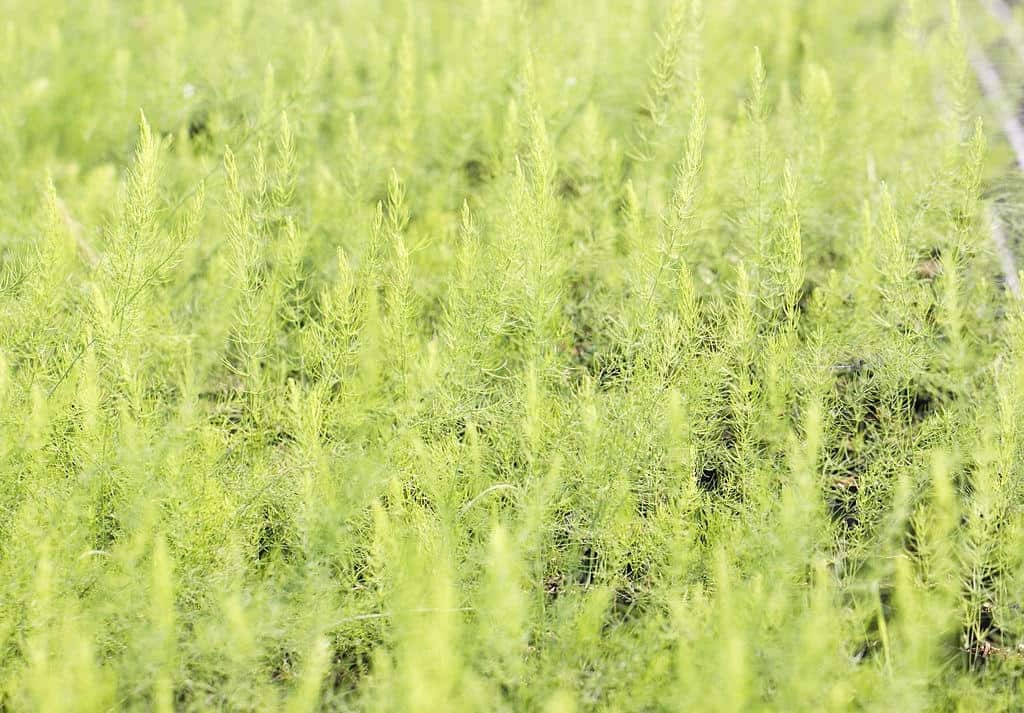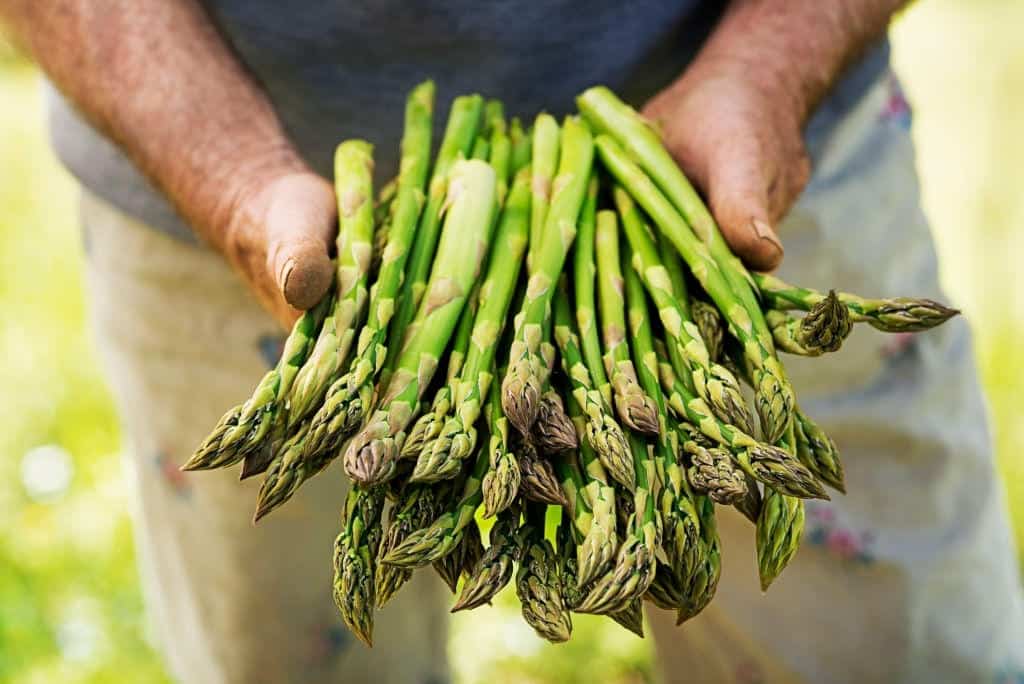You may be wondering – what are the stages of growing asparagus?
Perhaps you want to achieve the best results in your harvest. Moreover, it could also be a way for you to eliminate common problems that arise in each stage.
Whatever the case may be, growing asparagus is not as complicated as you think it would be. In fact, with the right techniques and conditions, you can expect an abundant harvest. Your yield will also be great, which equates to a high return on investment.
With all these things in mind, let us go ahead and proceed to learn more about the stages of growing asparagus for a profitable and maximum yield.

3 Stages of Growing Asparagus
In the nutshell, there are 3 stages of growing asparagus. This includes planting, care and maintenance, and lastly, harvesting.
Contrary to what some people assume, it is pretty straightforward to grow asparagus. However, there are some requirements when it comes to ensuring the growth of your crop during each stage.
This is important to note when you want to achieve the highest quality of yield and outcome in your crops.
For some people, they opt to cultivate this crop inside a greenhouse. But do take note that by doing so, there are some limitations to consider.
The advantage of planting in a greenhouse is that you are able to monitor the optimal temperature inside. You no longer need to deal with certain uncertainties and inconsistencies when it comes to the changing weather.
If you are ready to pursue growing asparagus, let’s go ahead and learn more about the different stages of growth right here.
1. Planting

The initial stage of growing asparagus is the planting process.
Ideally, you should plant asparagus when it is cooler. We recommend the early months of spring when the soil temperature is about 50 degrees Fahrenheit.
Now, if you prefer to plant the crown, it means that you are working with the root system of one-year-old asparagus. This is actually a quicker way to go about it since this eliminates the need to do a lot of weeding, which is usually the case with asparagus seeds.
An important thing to remember when planting asparagus either from crown or seed is to select an area that is quite sunny. Asparagus needs about 8 hours of sunlight each day. This will help ensure the optimal health of the crop.
The soil also needs to be chosen carefully. The preferred pH level is between 6.5 and 7.5. Thus, make sure you keep this in mind when planting this crop.
2. Growth, Care, and Maintenance
Next up, you want to know how long it actually takes for you to grow this crop.
For the most part, growing asparagus can take anywhere between 2 and 3 years. Some people may decide to harvest once the spears developed earlier. But we advise against doing so because it takes a longer time for the crops to establish and maintain their growth.
As mentioned earlier, you can expect some weeds to grow during the span of your asparagus’ life. In fact, the 2 years upon planting your crop would involve weed management. We highly recommend that you perform this process to prevent weeds from invading the entire area.
You need to smother and reduce weeds by mulching compost right around the crops. Do this at the onset of spotting weeds before things get worse.
Asparagus needs about a couple of inches of water during the initial two years of its life. It is easier to manage watering needs when you have your crops in the greenhouse because you can simply implement drip irrigation. Feeding your plants during fall or spring is also important to maintain their excellent growth.
Overall, asparagus has a tendency to multiply. In 3 years, the crop should be quite thick and fill up the planting area. As a result, you need to be able to measure your pots and beds before planting. This way, you can forget issues with overcrowding.
As for proper care techniques, trimming the dead foliage is a good idea during the first couple of years. Cut the dead foliage at about 2 inches from up the ground. By doing so, you will have an easier time managing diseases and pests in your crops.
3. Harvesting Your Asparagus

And the last stage of growing asparagus is the harvest process.
You can already harvest asparagus once it is between 8 and 10 inches high. The younger the spear, the more tender this vegetable.
When you want to trim off the spears, you should do so at around ground level. But you need to stop instantly with the cutting when the spear is already small just like a pencil.
Learn more about stages of growing asparagus in this video.
Bottom Line
There is no doubt that asparagus is a nutritious and tasty vegetable. This is why it is one of the most popular crops to grow.
Growing asparagus is not as complex as what some people assume it to be.
In fact, there are only a few growth stages of this crop with certain conditions required to ensure success in all your efforts.
To achieve the best results, you need to be aware of the stages of growing asparagus and what to do with each stage. This will help you have a better understanding of this crop and what it takes to ensure its proper growth and development.
I hope this post has been helpful in guiding you towards planting this crop well. Thus, you can expect a profitable and abundant yield that is truly worth your time, money, and energy.